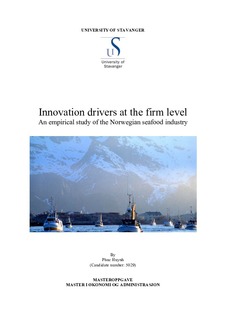| dc.description.abstract | Innovation has consistently been identified as a key factor for the success of economic growth and firm performances. It is highly relevant to study and understand what drives innovation and how potential factors characterize the different innovation types, especially, in nowadays context, when market and technological changes have become more unpredictable and uncertain. Understanding the drivers would allow business leaders and policymakers to stimulate a higher degree of innovativeness in the firms, the industry, and the country.
The driving factors of innovation can be distinguished by two different types: macro factors and micro factors. While macro-factors are the macro-environmental phenomena such as changes in demography, incomes, preferences, climates; micro-factors are the influences from micro-environments and have direct effects on business strategies, as well as on innovation strategies. In this research, those micro-factors refer to “Business objective drivers.” Business objective drivers can be grouped into three main types: demand-driven, supply-driven, and policy-driven factors.
The thesis objective is to investigate if there exist significant relationships between those “business objective drivers” and the four types of innovation: radical product innovation, radical process innovation, incremental product innovation, incremental process innovation. The thesis is an empirical study using data from the online survey of 206 Norwegian seafood companies. The survey was conducted in 2016 by iProcess, the University of Stavanger. Both qualitative and quantitative analyses have been performed in this thesis. When it comes to the Norwegian seafood industry, this industry has been one of the most substantial contributors to Norway’s economic development and innovativeness. A variety of technological applications and innovations have been seen in all aspects ofthis industry, from fishing, farming to processing and supplying, from equipment to biotech. Therefore, the Norwegian seafood industry is an interesting case-study for empirical analysis. | nb_NO |
